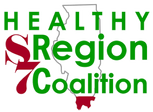With smoking, poor diet and sedentary lifestyles being the most common risk factors for disease, programming within the health education division educates persons on how to make changes and ways to break barriers toward a healthier lifestyle. By reducing tobacco use and secondhand smoke exposure, increasing physical activity, improving nutrition, and reducing obesity incidence, our risk of disease will decrease. As the risk of disease decreases, our quality of life years will increase. While it’s true some factors cannot be changed such as age, gender, and family history, it is also true a person can make a difference by making changes in their own health.
Health Education programs include working with schools, churches, and communities to implement evidence based programming. Through programming and systems changes our communities can better be able to promote healthy lifestyles, increase life expectancy, live healthier and fit lives, and improve the health of generations to come.
To view priority health concerns for our seven counties and strategies to address these concerns go to Illinois Project for Local Assessment of Needs (IPLAN).











